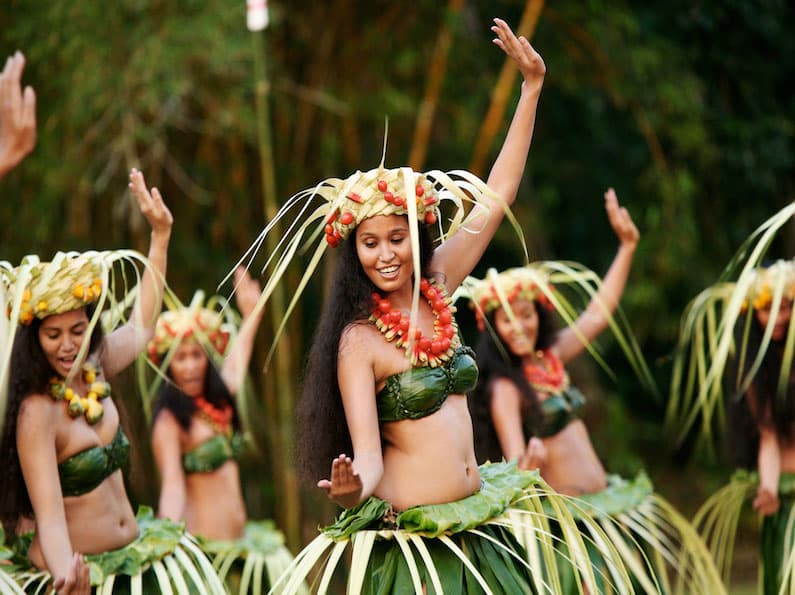Traditional Polynesian dancing has been practiced on the Pacific Islands for hundreds of years. This activity is an important part of Polynesian culture, as it allows local communities to tell their stories and daily life through dance movements. In this article, we’ll explore the secrets of traditional Polynesian dance, including choreography, costumes, knives, and more.
The origins of traditional Polynesian dance
Traditional Polynesian dance has deep roots in the history of the region. Ancient Polynesians used many dance moves to tell stories, communicate with the gods, celebrate events and resolve conflicts. Dance was an important means of transmitting Pacific Island culture and history. Traditional Polynesian dances then developed into different versions on each island and became national dances.
The different types of traditional Polynesian dances
There are different types of traditional Polynesian dances. The best known dances are the Hawaiian hula, the Samoan siva and the Tahitian tamure. Each island has its own version of these dances, each with its own moves, costumes and instruments. The dances are usually performed by groups of women called “vahines” and groups of men called “tane”. The dances are often accompanied by songs and music, mostly played on percussion instruments.
Traditional Polynesian dance costumes
Costumes are an integral part of traditional Polynesian dance. They are often colorful and decorative. The costumes include skirts made of pandanus leaves or coconut fibers called “pareus” or “tī leaf”. Women also wear flower necklaces called “lei” around their necks and flower crowns on their heads. Men often wear shorts and colorful shirts with tribal patterns.
Polynesian traditional dance knives
Knives are often used in certain traditional Polynesian dance choreographies. The knives, also called “ula ula” or “knives”, are a relatively recent addition to the traditional dance. Knives are often used to imitate fighting moves or to add intensity to dancing. The dancers use knives which have a rounded blade and are decorated with tribal designs.
Choreography in traditional Polynesian dance
The choreography of traditional Polynesian dance is based on natural movements. Dances are often made up of movements such as walking, jumping, arm and hand movement, as well as hip movements. Choreographies are often created to tell a story or honor a person or entity, such as a god or goddess.
The instruments of traditional Polynesian dance
The instruments of traditional Polynesian dance are mainly percussion instruments. Drums called “toere” or “pahu” are often used to give rhythm to the dance. Other instruments include shell conches called “pu” and coconut shell maracas called “tere”.
modern dances
Although traditional Polynesian dance remains very important to Polynesian culture, there are also modern dances that originated in the region. Modern dances are often influenced by other dance styles, such as contemporary dance and hip-hop. Modern dancers often use contemporary costumes and music in their performances.
In conclusion
Traditional Polynesian dancing is an activity with a long history in the Pacific region. It allows local communities to tell their daily life and their culture through dance movements. The different types of dance, costumes, knives and choreography are key elements of traditional Polynesian dance. Although modern dance has emerged, traditional Polynesian dance remains an important part of Polynesian culture.
FAQs
What are the types of traditional Polynesian dances?
The best known dances are the Hawaiian hula, the Samoan siva and the Tahitian tamure. Each island has its own version of these dances, each with its own moves, costumes and instruments.
How many people usually take part in a traditional Polynesian dance?
The dances are usually performed by groups of women called “vahines” and groups of men called “tane”.
What instruments are used in traditional Polynesian dance?
The instruments of traditional Polynesian dance are mainly percussion instruments, such as drums, shell conches and coconut maracas.
References
– “The Art of Polynesian Dance” by Monica O’Keefe
– “Tahitian Dance: A Complete Guide to the Basic Steps” by Vicki Corona


























